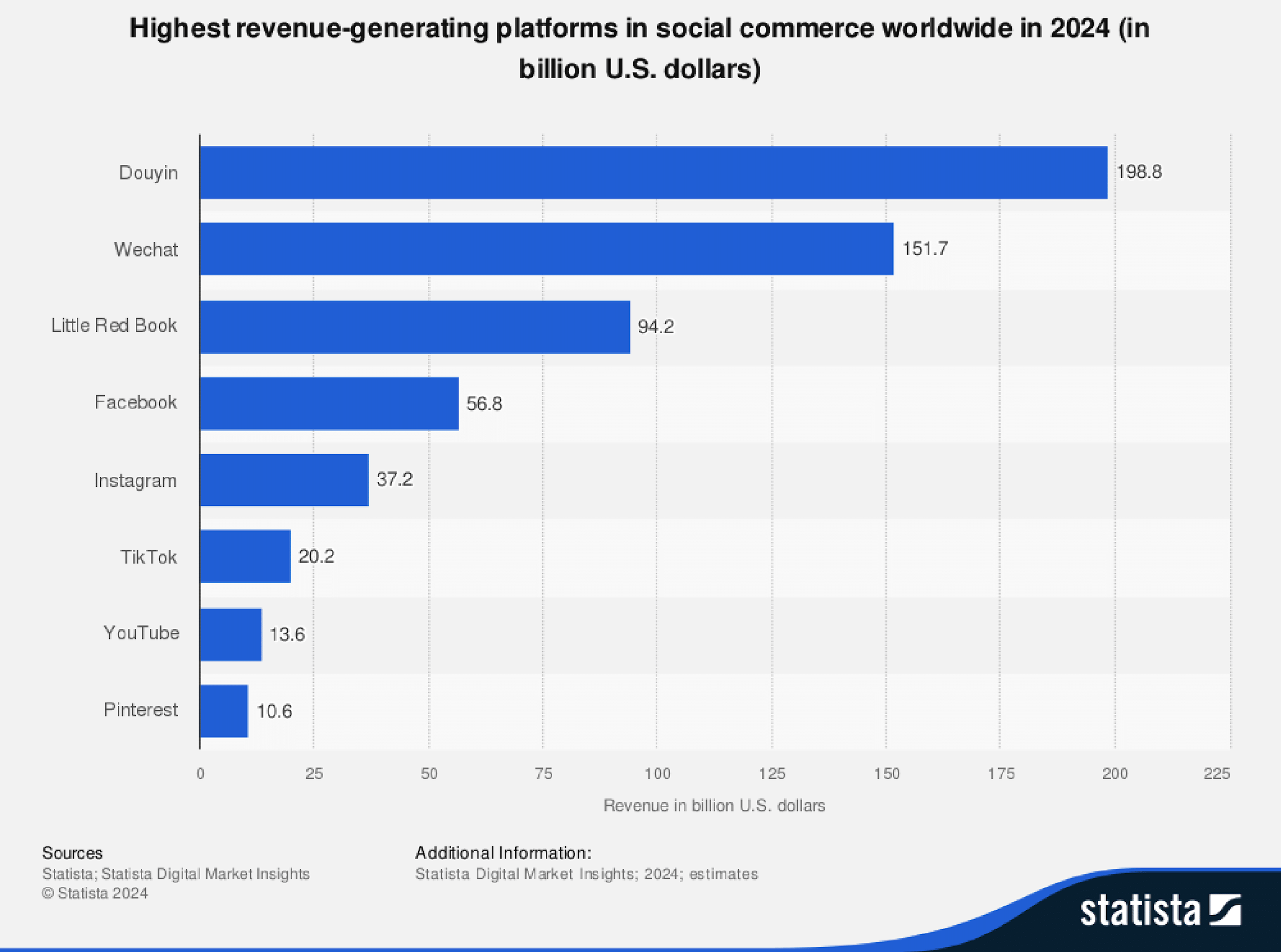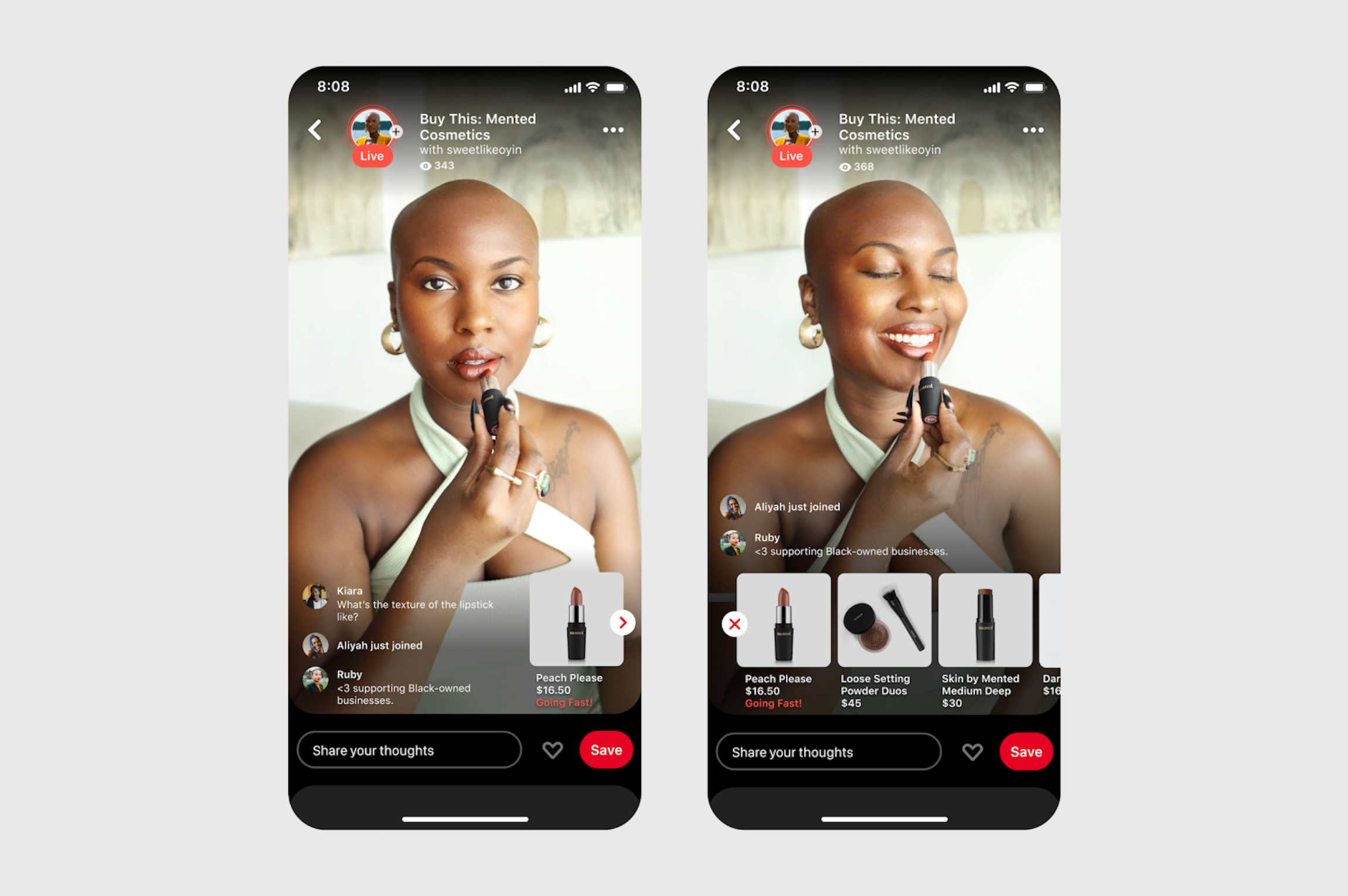
Social commerce involves selling products and services directly through social media platforms, merging the convenience of online shopping with social media engagement. While social commerce is a subset of eCommerce, it differs by facilitating sales directly on social media rather than other digital channels.
Using social media as a platform to promote and sell products is no longer just a trend. It has evolved into a relevant marketing and sales strategy capable of engaging customers, building brand loyalty and driving significant sales growth.

What is social commerce?
The popularity of social media spurred the birth of social commerce, which involves a range of strategies that specifically support the buying and selling of products and services via social media platforms. Any experience that allows a shopper to discover and purchase a product within a social media app is considered social commerce.
Today, Instagram, Facebook, Pinterest, Snapchat and TikTok are all vibrant, growing social commerce marketplaces in the US and European countries, although their sales pale in comparison to China-based platforms WeChat, Douyin and Little Red Book.

This statistic merely reinforces that social commerce is still a wide-open opportunity in the US, ripe for growth. However, businesses must recognize that succeeding in social commerce isn’t a no-brainer. It requires more than just placing ads that promote your products and services on the platforms you think your customers are using. Just as brick-and-mortar and online shops have unique qualities and require specific strategies to engage and convert customers, social media is no different.
The social aspect of social commerce
One of the most appealing characteristics of social commerce is the community aspect — something that a shopper doesn’t get when they’re simply browsing your website. On social media, users can connect with other users to get product recommendations, ask questions and ultimately get help making buying decisions. All you have to do is look at any product advertised on a social media platform and scroll through the user comments to see how powerful this interaction can be.
However, the two-way conversation social media provides presents a bigger opportunity. By purposefully engaging with your social media audience, businesses can gain invaluable feedback to help them better understand customer needs and preferences, leading to improved marketing, better product offerings and more customer satisfaction. To leverage this potential, more and more businesses are adding community managers to their social media teams. These individuals engage with users as themselves, not only responding to questions and comments within paid advertising but also seeking out organic discussions about the brand and the products. This human connection resonates with customers today, reinforcing the sense of community.
Influencers also factor into the community aspect of social commerce and can be powerful catalysts in creating conversations that attract new customers and incent sales. By creating authentic content featuring products in real-life scenarios, they increase product desirability — at least with their followers. While getting organic coverage from an influencer is the ultimate win, at this point a business can’t wait around with fingers crossed. To amplify brand visibility and credibility, businesses should implement influencer initiatives within their social media strategy. The key is choosing influencers with a loyal and engaged following that fits your target audience.
At Shoptalk 2024 Las Vegas, multiple brands including PetSmart, NBCUniversal and PacSun stressed that when you work with influencers, authenticity is as important as the size of an influencer's following. Kimmy Scotti, co-founder and CEO of beauty brand Fig. 1 said that her brand seeks out micro-influencers on Instagram and TikTok because she’s found they tend to influence larger creators. “Paying for a $300,000 USD post isn’t necessarily going to be economical, but if you work with a network of influencers that are seen by some of the larger players then you have a shot at getting organic coverage and there's nothing better than that.”
“Retailers and marketers should stop looking at social commerce as just a new shopping experience when it truly represents a paradigm shift in how consumers are interacting with brands. Pay close attention to TikTok in particular because, unlike Instagram, its influencers deliver a different kind of personalization. Its influencers position themselves as more authentic and less polished, which ultimately drives trust.
CHIEF MARKETING OFFICER, COMMERCETOOLS
The entertainment aspect of social commerce
Now that consumers are fully comfortable with shopping via social media platforms, video has become the preferred way for businesses to engage users scrolling through their feeds. This is ultimately leading to livestream shopping and shoppable video driving the next wave of social commerce growth. These tactics meld entertainment seamlessly with commerce, creating fun, immersive experiences that add a level of excitement to shopping and increase engagement.
Typically hosted by influencers, livestream events allow viewers to explore products while interacting with their favorite influencers and other viewers in real-time — and often include exclusive deals. This irresistible combination of factors results in higher conversion rates and increased sales.
While shoppable video has been around for awhile, it’s taken some time to get the experience right. Today, it’s engaging, educational and frictionless. Instead of the traditional experience that redirects viewers to a commerce site to purchase any products they see in a video, shoppable video enables shoppers to “add to cart” or “buy now” and continue without exiting the app.

TikTok has been at the forefront of the shoppable video trend, leading the brand to be ranked as having the highest in-app purchase revenue in the world at $189 million USD.
In an interview with Vogue Business, Jen Jones, Chief Marketing Officer at commercetools said she sees beauty brands leading the way on TikTok. commercetools customer Sephora, for example, has had incredible success on the platform, particularly with their shoppable beauty tutorials — so much so that the brand was featured in a TikTok case study. She feels that the meteoric rise of the social platform in the US offers businesses a glimpse of what the future of social commerce will look like as the buying power of Gen Z, TikTok’s largest audience, continues to increase.
Tapping into the potential of social commerce
As social media platforms continue to innovate and expand their commerce capabilities, businesses that embrace social commerce will be better positioned to thrive in the evolving digital marketplace. Adopting this approach not only enhances customer engagement and satisfaction but also drives sustained growth and success. However, businesses must have powerful, modern commerce technology in place that can support all of the social media platforms and deliver the robust experiences social shoppers expect. Brands including Ulta Beauty, Express and Belk leverage commercetools Composable Commerce to ensure they have the flexibility, scalability and performance they need to execute their social media strategies.
From a social commerce perspective, one of the foundational components of commercetools is composability which allows you to be everywhere and build as you want. And that’s important because the doors of the internet don't stop at your site and it needs to be easy for you to keep opening up new doors.
PARTNER, RMW COMMERCE
To learn more about the biggest trends in commerce, find out which brands are successfully delivering omnichannel experiences and explore the opportunities for improvement, download The Omnichannel Leadership Report 2024.